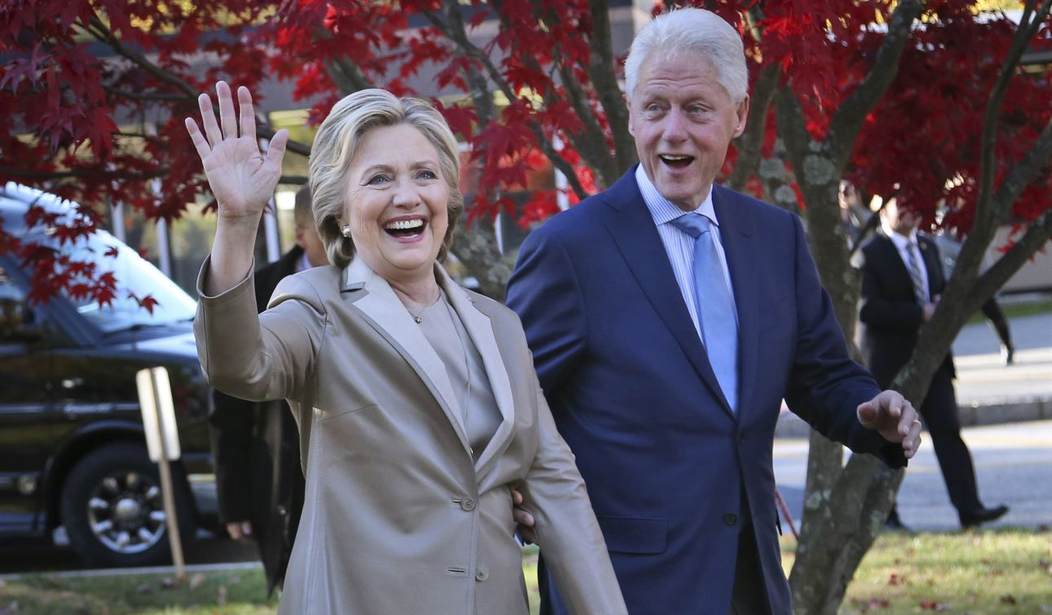
Investigative journalist John Solomon appeared on “Hannity” Wednesday night to discuss the latest developments in the Senate Judiciary Committee’s investigation into the origins of the Russian collusion probe.
Solomon reported that the Office of the Director of National Intelligence will release documents (could be as early as today) which prove the intelligence community knew in December 2016 the dossier was uncorroborated. He told Hannity:
Here’s the biggest thing to watch. As early as tomorrow, there could be a new declassification out of the ODNI, the annex to the original Intelligence Community Assessment of Russia. It will show, my sources tell me, that the intelligence community agreed in December 2016 that the Steele dossier was uncorroborated. Yet James Comey’s FBI went back to the FISA Court three more times and claimed they had verified that dossier.
Hannity remarked that this was “premeditated fraud on the FISA Court.”
Solomon also told Hannity that Senate investigators believe the FBI knew in the summer of 2016 that the Steele Dossier was tied to Hillary Clinton and the Democratic Party. Senators are trying to obtain FBI notes and emails from that time which detail their “first interactions with Steele’s Russia research.”
This is important because the FBI did not reveal the political origins of the dossier to the FISA Court.
A source “familiar with senators’ frustrations” told Solomon: “So far the bureau is slow-walking this stuff. We need to see these sort of documents before we question key witnesses.”
Chairman Lindsay Graham (R-SC) will hold a vote on whether to authorize subpoenas that would compel the FBI “to produce witnesses and outstanding documents.”
Solomon writes that following the release of DOJ Inspector General Michael Horowitz’ report in December, “Senate investigators zeroed in on a handful of little-noticed passages in the narrative that reference original FBI source documents showing what agents and supervisors knew about Steele, the former MI6 agent, and the firm that hired him, Fusion GPS.”
FBI officials have refused to answer questions about when they knew the dossier had been commissioned by Mark Elias, a partner at Perkins Coie law firm, on behalf of the Clinton campaign and the DNC or when they discovered it was bogus.
Solomon goes into extreme detail about the passage and footnotes that Senate investigators are focusing on. I am including it here for those who are interested.
Let me first provide some context:
Matthew Gaeta, an FBI agent based in Rome, interviewed Christopher Steele in London on July 5, 2016. Steele gave Gaeta the first memos from the dossier. Gaeta is identified in the Horowitz report as “Handling Agent 1” in the Horowitz report.
Gaeta had previously worked in the FBI’s New York field office. As Solomon writes, Gaeta immediately saw the connection and contacted his former colleague in the NY field office, Stephen Somma.
Somma is identified as “Case Agent 1” in the Horowitz report. He was London professor and FBI confidential human source Stefan Halper’s “handler.”
Dan Bongino, in a recent podcast, said he believes it was Somma who conceived the idea of obtaining a FISA warrant to spy on Carter Page after hearing from Gaeta and that we will soon be hearing much more about Somma’s role.
Mark Elias, mentioned above as the partner at the Perkins, Coie law firm, also served as the general counsel for the DNC and the Clinton campaign.
Solomon writes:
But one passage and two footnotes in Horowitz’s report that have largely escaped public attention suggest the FBI agent who first interviewed Steele about his anti-Trump research in London on July 5, 2016 was aware immediately of a connection to Clinton and that a separate office of the FBI passed along information from an informant by Aug. 2, 2016 that Simpson’s Fusion GPS was connected to the DNC.
For instance, the agent in London contacted an Assistant Special Agent in Charge (ASAC) in the New York field office (NYFO) shortly after interviewing Steele and obtaining one of the anti-Trump memos that made up his dossier, according to information in Horowitz’s report.
The agent sought advice July 13, 2016 on how to handle the sensitive election-year allegations from the supervisor in New York, where the FBI had already opened a probe of Page that would eventually be assumed by Washington headquarters.
“ASAC 1’s notes from his July 13 call with Handling Agent 1 closely track the contents of Report 80, identify Simpson as a client of a law firm, and include the following: ‘law firm works for the Republican party or Hillary and will use [the information described in Report 80] at some point,’” the Horowitz report stated. “ASAC 1 told us that he would not have made this notation if Handling Agent 1 had not stated it to him.”
Footnote 223 in the report reveals a second line of evidence that came to the FBI from a confidential human source (CHS) suggesting the Steele-Simpson-Fusion project was tied to Democrats. That warning was immediately sent to Agent Peter Strzok, the case agent for the Crossfire Hurricane probe investigating whether Trump and Russia colluded to hijack the 2016 election.
“At approximately the same time that Handling Agent 1 was reporting information about Simpson to ASAC 1, an FBI agent from another FBI field office sent an email to his supervisor stating that he had been contacted by a former CHS who ‘was contacted recently by a colleague who runs an investigative firm. The firm had been hired by two entities (the Democratic National Committee as well as another individual…not name[d]) to explore Donald J. Trump’s longstanding ties to Russian entities.’”
“On or about August 2, 2016, this information was shared by a CD supervisor with the Section Chief of CD’s Counterintelligence Analysis Section I (Intel Section Chief), who provided it that day to members of the Crossfire Hurricane team (then Section Chief Peter Strzok, SSA 1, and the Supervisory Intel Analyst,)” the footnote adds.
It’s clear why Senate investigators wish to obtain the original emails and notes from these conversations before they begin questioning witnesses. As we saw in the Flynn case, the FBI is loathe to give up incriminating documents. But, hopefully, they will soon be forced to. It’s also possible that the Durham team already has them.
Stay tuned.













Join the conversation as a VIP Member